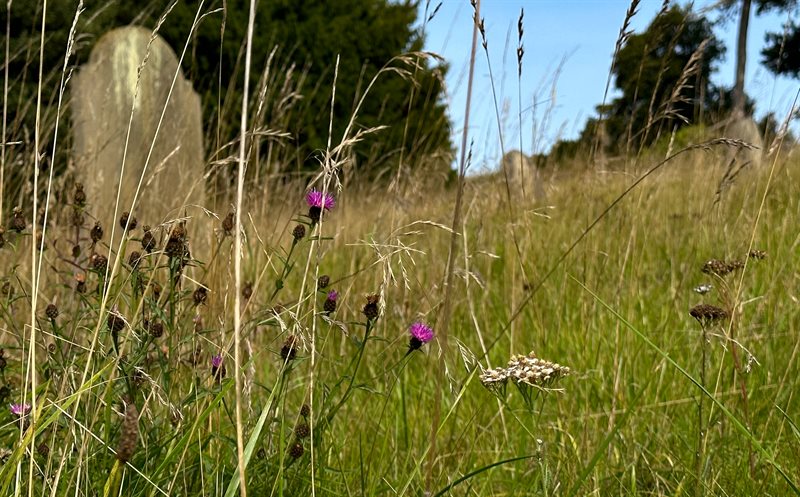Cemetery Maintenance

Dover District Council trialled a different management approach at its cemeteries in Dover, Deal and Sandwich in 2023. The aim was to find a better balance between maintaining access for relatives, promoting biodiversity, and moderating the use of fuel for mowing. The cemetery entrances and areas that contain recent burials were mowed as usual, but in other places the meadow species were allowed to grow and develop flowers.
St James’s Cemetery is a successful example of this approach. It's now an excellent place for wildlife and supports a valuable area of rare chalk grassland habitat. Since the sensitive grass cutting regime was introduced in 2023, the variety of wildflowers in St James’s Cemetery has increased; 106 plant species were recorded in 2023 whilst 138 species were recorded in 2024. This includes four species of wild orchid including the Bee Orchid and the Autumn Lady’s Tresses. The sensitive management has also helped boost the butterflies that live in the cemetery and the rare Adonis Blue was seen at St James’s in August 2024.
The Council will continue regular cuts to sections of the cemeteries at entrances, in headstone borders and in areas that contain recent burials. Elsewhere grass and wildflowers will be allowed to develop through the growing season, then cut and collected in late summer or early autumn. Self-seeded saplings, such as sycamores, will be controlled. This style of management will promote an attractive, balanced mix of grasses and wildflowers, which should help to support insect populations, including bees. Cemeteries and closed churchyards can provide a haven for wildlife in an urban setting and can also provide valuable links to other areas of grassland, including nature reserves, around Dover, such as Coombe Hole Local Wildlife Site.
War graves in all cemeteries are maintained by the Commonwealth War Graves Commission.